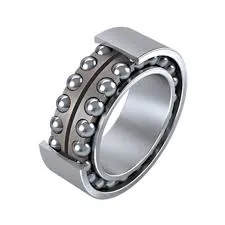
10 月 . 15, 2024 22:01 Back to list
Affordable Taper Roller Bearing Pricing Options for Your Industrial Needs
Understanding Taper Roller Bearing Prices Factors and Trends
Taper roller bearings are essential components in various mechanical systems, providing support and facilitating smooth movement in applications ranging from automotive to industrial machinery. As businesses seek to optimize performance and reduce operational costs, understanding the pricing dynamics of taper roller bearings becomes crucial. In this article, we will explore the factors affecting taper roller bearing prices, current market trends, and tips for purchasing these vital components.
What Are Taper Roller Bearings?
Taper roller bearings are designed to handle both radial and axial loads, making them ideal for applications that involve heavy loads and require precise alignment. Their unique design features tapered inner and outer raceways and conical rollers, which allow for efficient load distribution. These bearings are commonly used in automotive wheel hubs, gearboxes, and various heavy machinery applications.
Factors Influencing Prices
1. Material Composition The materials used in manufacturing taper roller bearings significantly impact their price. High-quality steel alloys or materials with special treatments to enhance wear resistance or corrosion resistance often come at a premium. The choice of material can also affect the bearing's performance, lifespan, and, consequently, its value.
2. Manufacturing Process The complexity of the manufacturing process influences the final cost. Bearings that require advanced manufacturing techniques, such as precision machining or heat treatment, typically incur higher production costs. Automation and technology advancements can lead to cost reductions, but the initial investment in high-tech machinery takes time to recover.
3. Brand Reputation Well-established brands often charge more for their products due to their perceived reliability and quality assurance. Reputable manufacturers invest in research and development, maintaining strict quality control protocols, and providing warranties, which can justify their higher prices.
4. Market Demand and Supply The dynamics of supply and demand in the bearing market can lead to price fluctuations. During high-demand periods, such as increased industrial production or automotive manufacturing, prices may rise. Conversely, oversupply or reduced demand can lead to price decreases. Global economic conditions, trade policies, and material availability also play significant roles in shaping market prices.
5. Size and Design Specifications Taper roller bearings come in various sizes and design specifications, tailored for specific applications. Custom or specialized bearings can command higher prices due to their unique design and production requirements. Standard-sized bearings, on the other hand, tend to be more competitively priced due to mass production.
6. Geographical Location The location of manufacturing facilities and the markets they serve can affect transportation and logistics costs, impacting the final price. Bearings manufactured in countries with lower labor costs may be cheaper, but import tariffs and shipping fees can offset these savings.
taper roller bearing price

Current Market Trends
As of 2023, the taper roller bearing market is witnessing notable trends that may influence pricing. The increasing shift towards automation and the rise of electric vehicles (EVs) are driving demand for high-performance bearings. Furthermore, as industries strive for lower operational costs, there’s a growing interest in cost-effective, high-quality alternatives to premium brands.
Sustainability is also becoming a vital consideration for manufacturers and consumers alike. Aimed at minimizing environmental impact, companies are focusing on producing bearings with longer service lives, reducing the need for frequent replacements. This trend may initially raise prices, but the long-term cost savings can offset the upfront investment.
Tips for Purchasing Taper Roller Bearings
When purchasing taper roller bearings, consider the following tips to ensure you obtain the best value for your investment
1. Quality Over Price While it may be tempting to opt for the cheapest option, prioritize quality and reliability. Investing in reputable brands can lead to better performance and longevity.
2. Understand Application Requirements Assess your specific application needs, including load capacity and environmental conditions. This understanding will guide you in selecting the right bearing for optimal performance.
3. Compare Suppliers Explore multiple suppliers and compare their offerings. Look for competitive pricing, customer service, and warranty options.
4. Stay Informed on Market Trends Keep an eye on industry developments and price trends, as these can affect your purchasing strategy over time.
Conclusion
Taper roller bearings are integral to countless applications, and understanding their pricing dynamics is essential for businesses aiming to maintain competitiveness. By considering material, manufacturing processes, market conditions, and application requirements, companies can make informed purchasing decisions that not only meet their operational needs but also align with their budgetary constraints. As the industry evolves, staying abreast of market trends will continue to be pivotal in securing the best value for taper roller bearing investments.
Latest news
-
Unlocking Efficiency with Spherical Roller Bearings
NewsOct.29,2024
-
The Ultimate Guide to Thrust Ball Bearings
NewsOct.29,2024
-
The Power of Thrust Roller Bearings: Engineered for Excellence
NewsOct.29,2024
-
The Power of Deep Groove Ball Bearings for Your Application Needs!
NewsOct.29,2024
-
The Power and Performance of Cylindrical Roller Bearings
NewsOct.29,2024
-
High-Quality Ball Bearing Manufacturing Machines
NewsOct.29,2024
